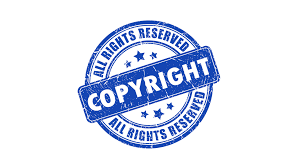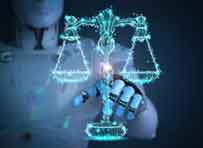Critical Analysis of Napsters case and Post Napster Development
The Napster case[1] stands as a seminal moment in the history of copyright law
and digital music distribution. With its disruptive technology, Napster
revolutionized the way people shared and accessed music online, challenging
established norms and posing critical questions about the intersection of
copyright, technology, and creative expression.
This research paper provides a comprehensive analysis of the Napster case and its profound implications on copyright law, fair use, peer-to-peer file sharing, and the music industry. Furthermore, it examines the subsequent developments in digital music distribution, exploring the evolution of music platforms and the current landscape of digital music consumption. In the late 1990s, Napster emerged as a ground-breaking platform that allowed users to share and download music files freely over the internet. Enabled by peer-to-peer file-sharing technology,
Napster quickly gained immense popularity, involving millions of users and disrupting the traditional music industry. However, the widespread availability of copyrighted music on Napster's platform sparked a fierce legal battle. This research paper critically analyses the legal issues at the heart of the Napster case and examines the court decisions that ultimately resulted in the demise of the platform.
Furthermore, this paper investigates the post-Napster developments in the digital music landscape. These developments aimed to strike a balance between the rights of copyright holders, the demands of consumers, and the need for sustainable business models in the digital age.
Facts Of The Case:
In the late 1990s, Shawn Fanning, a college student, developed a revolutionary software application named Napster. This peer-to-peer file-sharing platform allowed users to share and download music files directly from one another's computers. With its user-friendly interface and extensive music library, Napster quickly gained immense popularity, attracting millions of users worldwide. Napster's rise to prominence, however, was not without controversy. The platform's success relied heavily on the sharing of copyrighted music without proper authorization from rights holders. This raised significant concerns among the music industry, which saw Napster as a threat to their economic interests.
The copyright holder including major record labels and artists argued that Napster by providing a platform for the users to share copyrighted music without any prior permission or payment has resulted in copyright infringement. They further contended that this unauthorized access to the music has resulted in substantial financial loss for the music industry.
In 2000, the Recording Industry Association of America (RIAA), along with several major record labels, filed a lawsuit against Napster, alleging copyright infringement. The case primarily revolved around the question of whether Napster was directly liable for the copyright infringements committed by its users.
Legal Issues:
Decision Of The Court
The Napster case underwent several stages of litigation, including district court rulings and subsequent appeals, which ultimately shaped the outcome and had a significant impact on copyright law and digital music distribution. The following are the key court decisions in the Napster case:
District Court Ruling (2000)
In 2000, the United States District Court for the Northern District of California issued a ruling in favour of the plaintiffs (the music industry represented by the RIAA). The court held that Napster could be held liable for contributory and vicarious copyright infringement. The court reasoned that Napster's platform actively facilitated and encouraged the sharing of copyrighted music without authorization, knowingly enabling and benefiting from the infringement. As a result, the court issued an injunction against Napster, ordering the platform to cease facilitating the sharing of copyrighted music.
Appeals Court Ruling (2001)
Napster appealed the district court's ruling to the United States Court of Appeals for the Ninth Circuit. In 2001, the appeals court upheld the district court's decision, affirming that Napster could be held liable for contributory and vicarious copyright infringement. The court emphasized Napster's active role in providing the means for users to share copyrighted music and its ability to control and benefit from the infringing activities. The appeals court upheld the injunction against Napster, requiring the platform to implement measures to prevent the sharing of copyrighted content.
The Circuit Court concurred with the trial court's conclusion that Napster users were most likely infringing on plaintiffs' copyrights directly.
The court decided on the following points[2]:
The following are some of the key implications and consequences that arose from the Napster case:
If Napster wants to claim immunity, it can do so under the IT Act, 2000 under the network service provider provision. A network service provider under this section can claim immunity if he proves that such contravention was outside the scope of his knowledge.
Conclusion:
The Napster case and its aftermath have had a profound impact on copyright law, the music industry, technology, and digital media consumption. The litigation raised critical legal issues, including copyright infringement, the liability of online service providers, fair use, and the balance between copyright protection and technological innovation.
The court decisions established important legal precedents, holding Napster liable for contributory and vicarious copyright infringement and shaping the responsibilities of online platforms. The implications and consequences of the Napster case have been wide-ranging. The music industry underwent a significant transformation, shifting from unauthorized file sharing to licensed music streaming platforms. This shift led to new business models and a reimagining of digital music distribution.
It also sparked discussions about the balance between copyright protection and technological advancement, with ongoing efforts to adapt copyright laws to the digital age. The Napster case serves as a landmark in the history of copyright law and digital media, marking a turning point in the way copyrighted content is distributed, consumed, and protected.
It serves as a reminder of the ongoing need to balance the rights and interests of content creators, technology intermediaries, and consumers, while embracing the opportunities and challenges presented by technological advancements. The legacy of the Napster case continues to influence the legal, technological, and cultural landscapes, shaping the future of copyright and digital media for years to come.
End-Notes:
This research paper provides a comprehensive analysis of the Napster case and its profound implications on copyright law, fair use, peer-to-peer file sharing, and the music industry. Furthermore, it examines the subsequent developments in digital music distribution, exploring the evolution of music platforms and the current landscape of digital music consumption. In the late 1990s, Napster emerged as a ground-breaking platform that allowed users to share and download music files freely over the internet. Enabled by peer-to-peer file-sharing technology,
Napster quickly gained immense popularity, involving millions of users and disrupting the traditional music industry. However, the widespread availability of copyrighted music on Napster's platform sparked a fierce legal battle. This research paper critically analyses the legal issues at the heart of the Napster case and examines the court decisions that ultimately resulted in the demise of the platform.
Furthermore, this paper investigates the post-Napster developments in the digital music landscape. These developments aimed to strike a balance between the rights of copyright holders, the demands of consumers, and the need for sustainable business models in the digital age.
Facts Of The Case:
In the late 1990s, Shawn Fanning, a college student, developed a revolutionary software application named Napster. This peer-to-peer file-sharing platform allowed users to share and download music files directly from one another's computers. With its user-friendly interface and extensive music library, Napster quickly gained immense popularity, attracting millions of users worldwide. Napster's rise to prominence, however, was not without controversy. The platform's success relied heavily on the sharing of copyrighted music without proper authorization from rights holders. This raised significant concerns among the music industry, which saw Napster as a threat to their economic interests.
The copyright holder including major record labels and artists argued that Napster by providing a platform for the users to share copyrighted music without any prior permission or payment has resulted in copyright infringement. They further contended that this unauthorized access to the music has resulted in substantial financial loss for the music industry.
In 2000, the Recording Industry Association of America (RIAA), along with several major record labels, filed a lawsuit against Napster, alleging copyright infringement. The case primarily revolved around the question of whether Napster was directly liable for the copyright infringements committed by its users.
Legal Issues:
- Whether Napster's platform facilitated and contributed to copyright infringement by allowing users to share copyrighted music without authorization?
- Whether Napster could be held directly liable for copyright infringement?
- Whether Napster could be held Contributory and vicariously liable for copyright infringement?
- Whether Napster's activities fell within the ambit of fair use or exceeded its boundaries?
Decision Of The Court
The Napster case underwent several stages of litigation, including district court rulings and subsequent appeals, which ultimately shaped the outcome and had a significant impact on copyright law and digital music distribution. The following are the key court decisions in the Napster case:
District Court Ruling (2000)
In 2000, the United States District Court for the Northern District of California issued a ruling in favour of the plaintiffs (the music industry represented by the RIAA). The court held that Napster could be held liable for contributory and vicarious copyright infringement. The court reasoned that Napster's platform actively facilitated and encouraged the sharing of copyrighted music without authorization, knowingly enabling and benefiting from the infringement. As a result, the court issued an injunction against Napster, ordering the platform to cease facilitating the sharing of copyrighted music.
Appeals Court Ruling (2001)
Napster appealed the district court's ruling to the United States Court of Appeals for the Ninth Circuit. In 2001, the appeals court upheld the district court's decision, affirming that Napster could be held liable for contributory and vicarious copyright infringement. The court emphasized Napster's active role in providing the means for users to share copyrighted music and its ability to control and benefit from the infringing activities. The appeals court upheld the injunction against Napster, requiring the platform to implement measures to prevent the sharing of copyrighted content.
The Circuit Court concurred with the trial court's conclusion that Napster users were most likely infringing on plaintiffs' copyrights directly.
The court decided on the following points[2]:
Fair Use:
The Circuit court concurred with the district court's "general analysis of Napster system uses" along with its consideration of the three "alleged fair uses identified by Napster" � "sampling, where users make temporary copies of a work before buying; liberal distribution of songs by both new and established artists; and space-shifting when users access a sound recording through the Napster system that they already own in audio CD format."- The court considered these points:
- That was the nature and purpose of the use, whether it was for commercial or educational purposes.
- The court considered that what was the nature of the copyrighted work.
- The size and significance of the piece used in relation to the entire copyrighted work.
- The court examined the impact of the use on the copyrighted work's potential market or value.
- Even though no sales were made but the repetitive use amounts to exploitation which certifies the criteria of the commercial use. songs were discovered to be "near to the core" of the types of creative works expected to be protected by copyright, and complete songs were acquired, pitting Napster against the second and third factors. The effect of downloads was discovered to be detrimental to sales and hence putting an end to Napster's case for a fair use defense.
Direct Infringement:
The circuit court agreed with the district court's decision that Napsters were directly infringing the plaintiff's copyright.Contributory Infringement:
In order to prove the contributory infringement, a plaintiff must prove that the defendant has the knowledge of the infringement and here in the present case Napster knew that its users were distributing copyrighted content without prior permission and hence Napster was a substantial contributor to the infringement. The Ninth Circuit upheld this analysis, accepting that Napster had "knowledge, both actual and constructive, of direct infringement"[3]. Furthermore, they asserted that Napster had the ability to control and benefit from the infringing activities of its users, rendering it vicariously liable for copyright infringement.
Post Napster Development[4]
Although the music industry was horrified by the case, it also showed the bright side that how digital distribution could be beneficial. The ability to interact with the customers single-handedly without any hustle and expense of the physical distribution network.The following are some of the key implications and consequences that arose from the Napster case:
-
Copyright Enforcement and Liability of Online Service Providers:
The Napster case established a legal precedent regarding the liability of online service providers for copyright infringement committed by their users. The rulings emphasized the active role played by platforms in facilitating and promoting copyright infringement, making them accountable for contributory and vicarious infringement. This precedent continues to shape the legal landscape for online platforms and their responsibilities in combating copyright infringement.
-
Evolution of Digital Music Distribution:
The Napster case prompted a significant shift in the music industry's approach to digital music distribution. With the demise of Napster, copyright holders and music labels recognized the need to adapt to the digital landscape and explore new business models. This led to the emergence of licensed music streaming platforms, such as Spotify, Apple Music, and Tidal, which aimed to provide convenient access to music while compensating artists and rights holders.
-
Balancing Copyright Protection and Technological Innovation:
The Napster case highlighted the delicate balance between copyright protection and technological innovation. It sparked a broader conversation about the need to adapt copyright laws to the digital age without stifling technological advancements or impeding legitimate uses of technology. This ongoing dialogue continues to shape the legal and policy frameworks surrounding copyright and emerging technologies.
-
Changing Consumer Behavior and Attitudes:
The Napster case and the subsequent legal battles over file-sharing platforms influenced consumer behavior and attitudes towards digital media consumption. The shutdown of Napster led to the rise of legal alternatives, which encouraged consumers to transition from unauthorized file sharing to licensed streaming services. This shift in behavior demonstrated the potential impact of legal alternatives and the willingness of consumers to embrace convenient and affordable access to digital content.
-
Digital Rights Management (DRM) and Copyright Protection Technologies:
In response to the challenges posed by unauthorized distribution, the music industry and content creators increasingly implemented digital rights management (DRM) technologies to protect copyrighted content. DRM technologies aimed to control access to digital media and prevent unauthorized copying and sharing. However, the effectiveness and impact of DRM on consumer experience and piracy rates remain subjects of ongoing debate.
-
Education and Awareness of Copyright:
The Napster case brought copyright issues to the forefront of public attention and raised awareness about the importance of copyright protection. It prompted efforts to educate the public about copyright laws, fair use, and responsible digital media consumption. Educational initiatives aimed to foster a better understanding of the rights and obligations of content creators, technology intermediaries, and consumers in the digital age.
Napster Case From Indian Point Of View
In India, copyright is infringed only when[5]:- Either the copyrighted work is stored or reproduced;
- There is selling or hiring involved;
- Copies of the work are issued to the public;
- The work is communicated to the public or is performed for the public;
- If the work is translated or turned into any adaptation.
If Napster wants to claim immunity, it can do so under the IT Act, 2000 under the network service provider provision. A network service provider under this section can claim immunity if he proves that such contravention was outside the scope of his knowledge.
Conclusion:
The Napster case and its aftermath have had a profound impact on copyright law, the music industry, technology, and digital media consumption. The litigation raised critical legal issues, including copyright infringement, the liability of online service providers, fair use, and the balance between copyright protection and technological innovation.
The court decisions established important legal precedents, holding Napster liable for contributory and vicarious copyright infringement and shaping the responsibilities of online platforms. The implications and consequences of the Napster case have been wide-ranging. The music industry underwent a significant transformation, shifting from unauthorized file sharing to licensed music streaming platforms. This shift led to new business models and a reimagining of digital music distribution.
It also sparked discussions about the balance between copyright protection and technological advancement, with ongoing efforts to adapt copyright laws to the digital age. The Napster case serves as a landmark in the history of copyright law and digital media, marking a turning point in the way copyrighted content is distributed, consumed, and protected.
It serves as a reminder of the ongoing need to balance the rights and interests of content creators, technology intermediaries, and consumers, while embracing the opportunities and challenges presented by technological advancements. The legacy of the Napster case continues to influence the legal, technological, and cultural landscapes, shaping the future of copyright and digital media for years to come.
End-Notes:
- A&M Records, Inc v. Napster, Inc. 239 F.3d 1004 (2001).
- htps://letslearnlaw.com/b/critical-analysis-of-napster-case-and-post-napster-developments/. Visited (14-06-2023).
- https://www.dcs.k12.oh.us/site/handlers/filedownload.ashx?moduleinstanceid=1862&dataid=1923&FileName=Napster_Case_Summary.pdf. Visited on (6-06-2023).
- https://scholarship.claremont.edu/cgi/viewcontent.cgi?article=2865&context=cmc_theses. Visited on (9-06-2023)
- Supra Note 2.
Award Winning Article Is Written By: Mr.Sanskar Pradhan & Ms.Garvita Garg
Authentication No: JU318005431796-29-0623
Law Article in India
Legal Question & Answers
Lawyers in India - Search By City
LawArticles
How To File For Mutual Divorce In Delhi

How To File For Mutual Divorce In Delhi Mutual Consent Divorce is the Simplest Way to Obtain a D...
Increased Age For Girls Marriage

It is hoped that the Prohibition of Child Marriage (Amendment) Bill, 2021, which intends to inc...
Facade of Social Media

One may very easily get absorbed in the lives of others as one scrolls through a Facebook news ...
Section 482 CrPc - Quashing Of FIR: Guid...

The Inherent power under Section 482 in The Code Of Criminal Procedure, 1973 (37th Chapter of t...
The Uniform Civil Code (UCC) in India: A...

The Uniform Civil Code (UCC) is a concept that proposes the unification of personal laws across...
Role Of Artificial Intelligence In Legal...

Artificial intelligence (AI) is revolutionizing various sectors of the economy, and the legal i...









Please Drop Your Comments